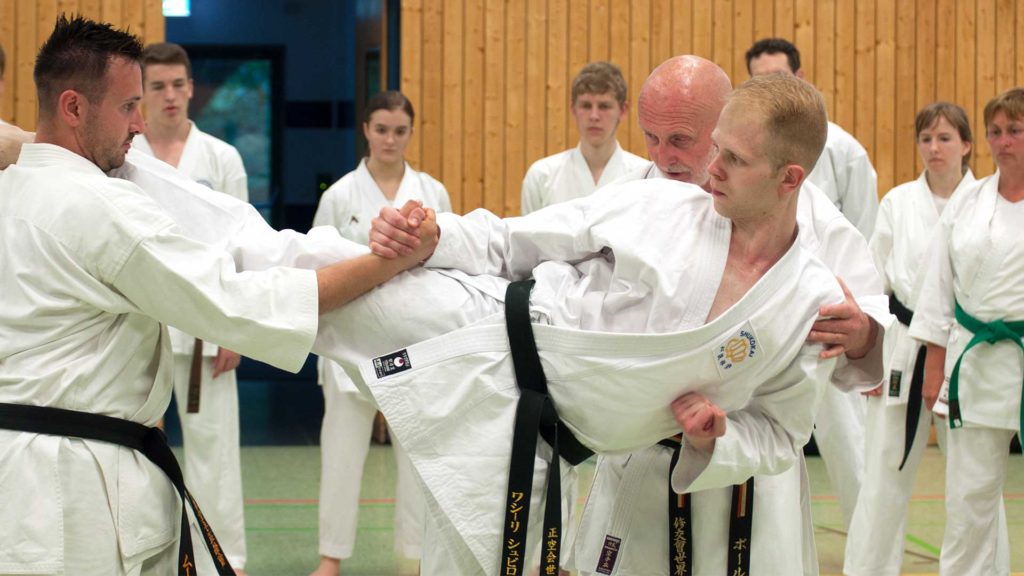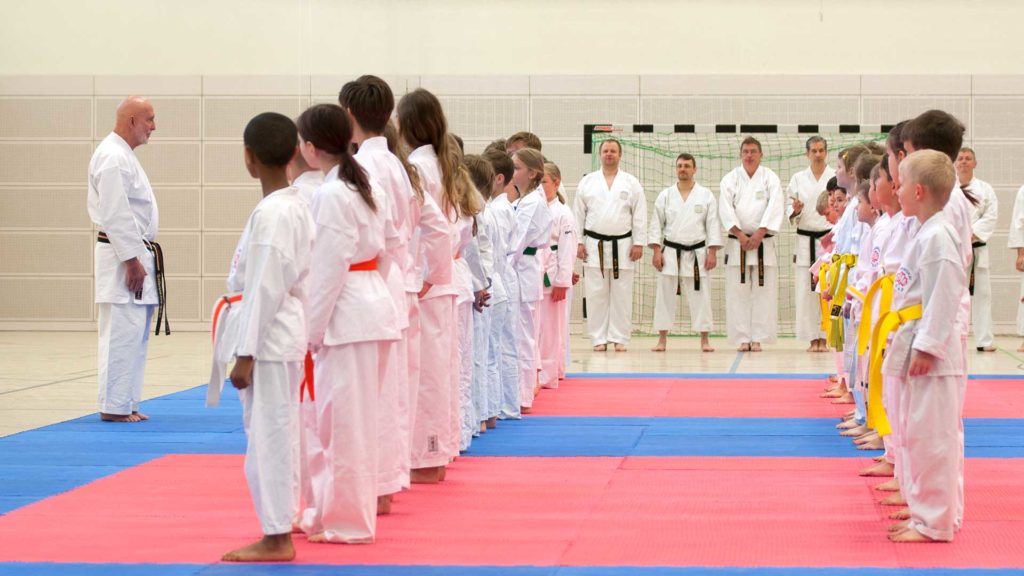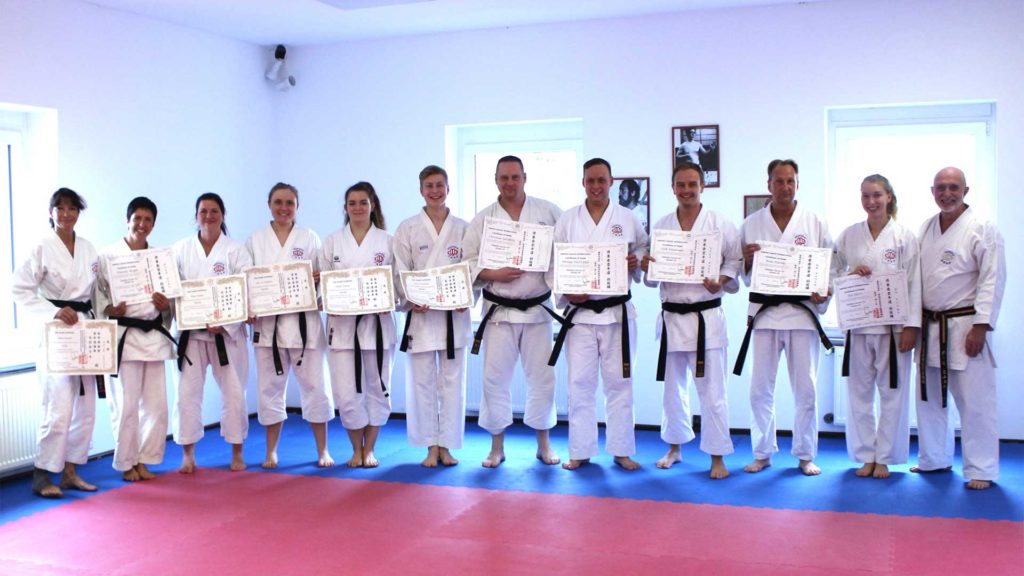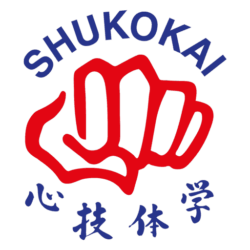The human body has natural weapons, such as hands, elbows, knees, feet, etc. Shukokai Karate training develops a strength that enables one to build effective self-defence regardless of individual stature. One learns how to use these skills against one or more opponents. The following elements are fundamental to the training:
- Kihon 基本 (Ki: power, energy; Hon: root, origin),
- Kata 型 (a prescribed sequence of movements) and
- Kumite 組手 (fighting with one or more opponents)

The Grading System
To symbolise the level of proficiency, the kyu system was introduced, recognisable by the different belt colours. The higher one progresses in this kyu system, the more difficult and complex the tasks that have to be fulfilled become. At the same time, the responsibility increases with the number of students who look up to you.

When a karateka reaches the level of first dan (black belt) it is often assumed that he is now a true master. This is not correct. The first Dan shows that the student has learned the technical basics, he can now deal with the spirit of the Budo.
Due to the affiliation of Samurai Karate Germany to the “Shukokai-World-Karate-Association” with its headquarters in Kobe/Japan, the Dan degrees have international validity and are registered in Japan.

The path to black belt is certainly no walk in the park, but it is a goal that can be achieved within a few years with regular training.
The black belt training
Regularly, Dan holders meet to train together and ensure their technical progress. The joint training of even advanced karateka is an essential part of Shukokai Karate and takes place in one of our training locations.
